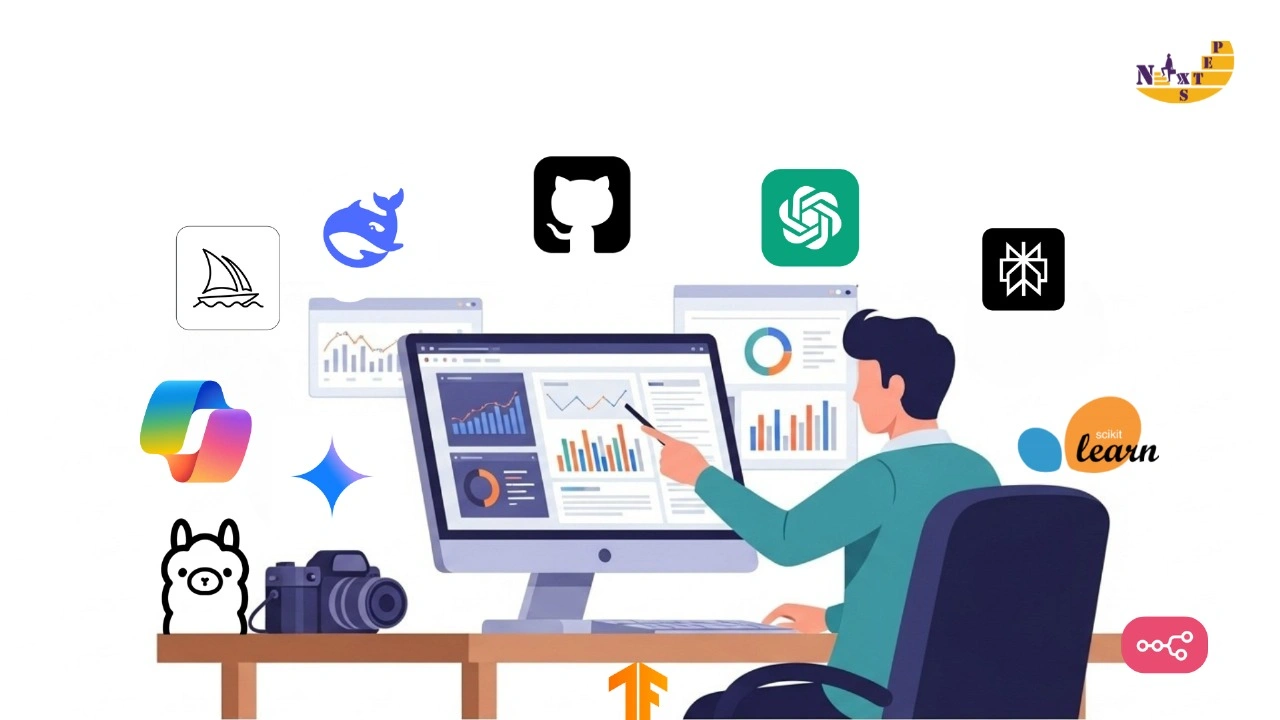Start Your Digital Marketing Freelance Career in Nepal

So, You Want to Be a Digital Marketing Freelancer in Nepal? Here’s How.
The idea of being your own boss is exciting, isn’t it? Setting your own hours, working from a café in Thamel or your home in Pokhara, and building something that’s truly yours. For many people in Nepal, this doesn’t have to be a dream. If you love being creative and are curious about how businesses connect with people online, a career as a freelance digital marketer might be the perfect fit for you.
But let’s be honest, figuring out where to start can feel like a huge challenge. It’s easy to get overwhelmed. That’s why I’ve put together this guide. Think of me as your instructor, walking you through the exact steps you need to take to build the right skills and launch a freelance career you can be proud of.
Why This is a Golden Opportunity, Especially Right Now
Every business, from the corner momo shop to a big travel agency, needs to be online to survive. They know it, but many of them don’t have the time or the skills to do it well. That’s where you come in.
This isn’t just about finding a job; it’s about tapping into a global market. As a freelancer in Nepal, you can work with clients in the US, Australia, or Europe, earning in foreign currency while enjoying our local cost of living. You’re not just an employee—you’re a small business owner.
Here’s what makes this path so powerful:
- You’re in high demand. Businesses need help, but many can’t afford a full-time marketing team. A skilled freelancer is the perfect solution.
- You control your life. You get to choose who you work with, what projects you take on, and when you work.
- Your income isn’t capped. There’s no fixed salary here. The more value you provide and the better your skills get, the more you can earn.
- You’ll never be bored. The digital world changes fast, which means you’re always learning something new.
The Skills That Will Actually Get You Hired
To succeed as a freelancer, you need to offer skills that get your clients real results. This is about more than just posting pretty pictures on Instagram. Let’s break down the core skills you’ll need to master.
1. Search Engine Optimization (SEO)
Think of Google as a massive library and your client’s website as a book. SEO is how you tell the librarian (Google) that this book is the absolute best one on its topic, so it should be displayed right at the front desk where everyone can see it. When someone searches for “best hiking agency in Nepal,” you want your client to show up on the first page. Mastering SEO means you can bring a steady stream of interested customers to their website without them having to pay for every single click.
2. Social Media Marketing (SMM)
Good social media isn’t just about posting updates. It’s about building a community. You’ll learn to create a personality for a brand, run smart ad campaigns on platforms like Facebook and Instagram to reach the exact right people, and figure out what’s working (and what’s not) by looking at the data. You become the host of the party, making sure everyone feels welcome and engaged.
3. Content Marketing
Content is how you build trust. It’s the helpful blog posts, useful videos, or interesting guides that show customers your client is an expert in their field. Instead of just shouting “Buy our stuff!” you’re providing real value. This makes people trust the brand and feel good about choosing them when they’re ready to buy.
4. Pay-Per-Click (PPC) Advertising
While SEO is like planting a garden that grows over time, PPC is like ordering a pizza—you pay, and you get results almost instantly. Using tools like Google Ads, you can place your client’s business right at the top of the search results for specific keywords. It’s your job to write ads that grab attention, manage the budget wisely, and make sure every dollar spent brings back even more in return.
5. Data Analytics
So, how do you prove to a client that your work is actually making a difference? With data. Using tools like Google Analytics 4, you can track everything: where website visitors are coming from, what pages they look at, and what actions they take. This isn’t about boring spreadsheets; it’s about finding the story in the numbers. It’s your report card that shows the client exactly how you’re helping them win.
Your Step-by-Step Plan to Get Started
Feeling that mix of excitement and “where do I even begin?” Don’t worry. Every expert started at zero. Here’s a simple, practical roadmap.
Step 1: Get a Solid Education
You can find bits and pieces of information on YouTube, but it’s a slow and confusing way to learn. A structured course is like having a map for your journey. A good digital marketing training program will guide you through everything, step-by-step, and give you practical projects that teach you how to actually do the work.
Step 2: Show What You Can Do (Even Before You Have Clients)
No one will hire you without seeing your work, but you don’t need a paying client to build a portfolio. Here are a few ideas:
- Start your own blog. Pick a topic you love—trekking, food, anything!—and use it as your personal lab. Practice your SEO and content skills to grow its audience.
- Help a local business or NGO. Offer your services for free or for a small fee to a local shop or charity you believe in. This gives you real-world experience and a great success story for your portfolio.
- Create practice projects. Pick a brand you admire and design a sample social media campaign for them. Write down your strategy, who you’d target, and what ads you’d run.
Step 3: Find Your Specialty (Your Niche)
Instead of being a jack-of-all-trades, try to become an expert in one area. A specialist is always more in demand. Think about it: if you had a heart problem, would you go to a general doctor or a heart surgeon? Your niche could be:
- By industry: “I help hotels in Nepal get more bookings with SEO.”
- By platform: “I’m an expert at growing businesses on Instagram.”
- By skill: “I manage Google Ads for online stores.”
Step 4: Start Finding Your First Clients
Okay, you’ve got the skills and some proof. It’s time to go find work!
- Use freelance platforms. Build a great-looking profile on sites like Upwork or Fiverr.
- Polish your LinkedIn profile. Connect with business owners in your chosen niche. Share useful tips to show them you know what you’re talking about.
- Tap into your network. Tell your friends, family, and former colleagues what you’re doing. Your very first client is often someone you already know.
Ready to Make Your Move? Here’s What to Do Next.
Feeling fired up? Good. Here’s your action plan:
- Commit to learning the right way. Find a solid digital marketing course that teaches you practical skills, not just theory.
- Pick a niche. Think about an industry or skill that genuinely excites you.
- Start a project today. Launch that blog or reach out to that local shop. The best way to learn is by doing.
- Update your online presence. Make sure your LinkedIn profile looks professional and highlights your new skills.
- Set a small goal. What do you want to achieve in the next 3 months? Get your first client? Finish your first project? Write it down.
How We Can Help You Get There
Here at NextStep InfoTech, we built our Digital Marketing course for one reason: to turn students into confident, job-ready professionals and freelancers. We know that lectures aren’t enough.
Here’s our approach:
- You’ll learn by doing. You won’t just hear about Google Ads; you’ll get a budget to run a real campaign. You won’t just learn SEO theory; you’ll actually optimize a website.
- You’ll learn from pros. Our instructors work in the industry. They teach what’s working right now, not what was working five years ago.
- You’ll build your portfolio in class. Every major skill you learn is tied to a project. By the time you graduate, you’ll have a portfolio full of real work to show clients.
- We’ll help you find opportunities. We have strong connections in the industry and provide internship and job support to help you land that first gig.
The opportunity to build a flexible, well-paying career as a freelance digital marketer is right here, right now. All you need are the right skills and the courage to take that first step.
Ready to start building your future?
Explore Our Digital Marketing Course Today!
Review the Course Syllabus to see exactly what you’ll learn, or Talk to an Admissions Counselor to get your questions answered. Your journey starts here.



